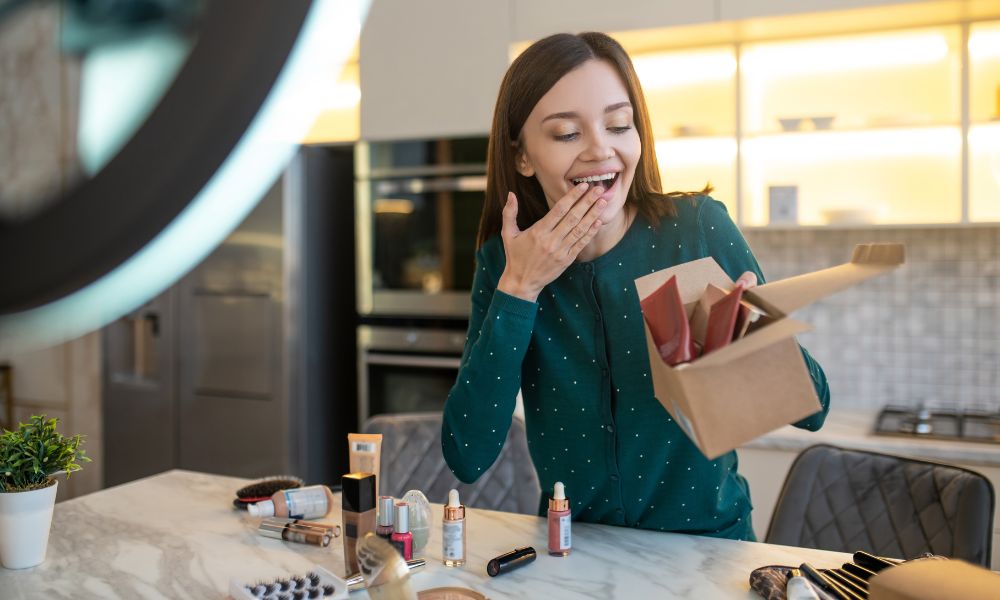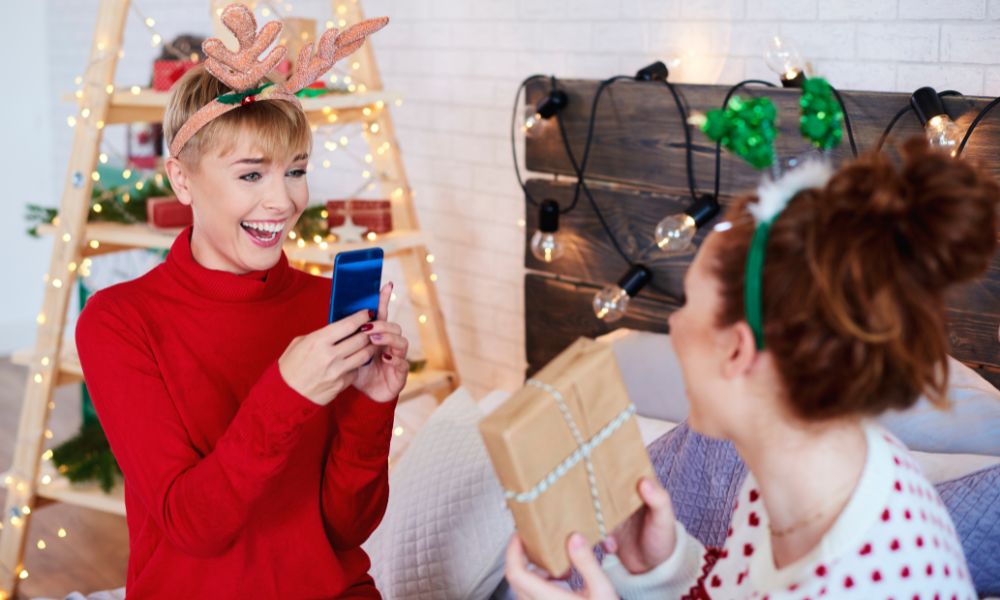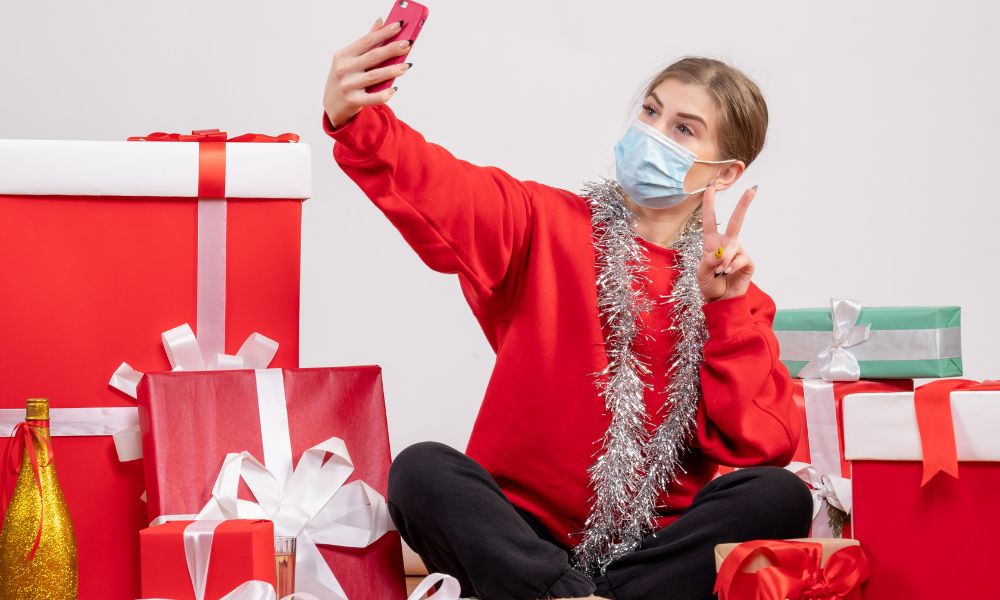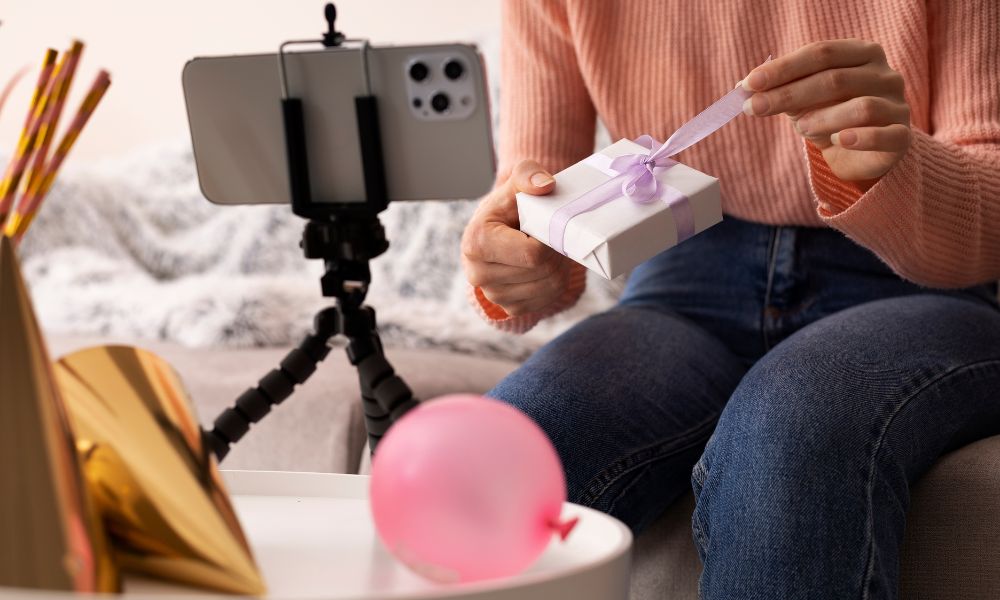Influencer seeding is one of the most cost-effective ways to generate authentic brand buzz, without paying for a single sponsored post upfront. By sending free products to the right creators, brands can spark organic content, build long-term relationships, and let real user experiences do the talking.
Unlike traditional influencer campaigns that start with contracts and fixed deliverables, seeding takes a more organic, relationship-first approach. When done right, it leads to genuine endorsements, social proof, and high-performing UGC that doesn’t feel like an ad.
In this guide, we’ll walk you through everything you need to know about influencer seeding, from how it works and who to send products to, to measuring results and avoiding common mistakes.

What Is Influencer Seeding?
Influencer seeding (also known as product seeding or gifting) is a marketing strategy where brands send free products to selected influencers, without requiring any formal commitment to post or promote. The idea is to introduce the product in a low-pressure, no-strings-attached way, and let the influencer decide whether to share their experience organically.
Here’s how it typically works:
- The brand identifies influencers who align with their product and audience.
- A package is sent, often with a note or brand story.
- The influencer tries the product and, if they like it, may post about it naturally.
The goal isn’t guaranteed exposure, it’s building relationships, collecting honest feedback, and potentially generating unpaid social content that feels authentic and trustworthy.
Why Influencer Seeding Matters in Marketing?
Today’s consumers are increasingly skeptical of overly polished, obviously sponsored content. Influencer seeding offers a more organic way to earn attention, based on real usage and personal recommendations.
Here’s why it works:
- Authenticity over obligation – Influencers post because they genuinely like the product, not because they were paid to.
- Lower cost, lower risk – You’re not paying upfront fees, but still have the potential to gain exposure.
- Relationship-building – It’s a great way to introduce your brand and open the door to long-term collaborations.
- Product-in-hand storytelling – Physical product creates opportunities for unboxing, reviews, tutorials, and UGC, all driven by the influencer’s creativity.
Influencer seeding bridges the gap between brand introduction and paid promotion, making it a smart first step in creator partnerships.
What Makes Influencer Seeding So Effective?
Influencer seeding stands out because it delivers results without relying on paid posts or rigid campaign structures. When executed thoughtfully, it drives organic awareness and builds long-term creator relationships, all while keeping budgets lean and flexible.
1. Builds Authentic Word-of-Mouth and Trust
When influencers share products they genuinely enjoy, without being paid to do so, it resonates more with their audience. These posts tend to feel more honest, more spontaneous, and more relatable.
That authenticity boosts trust in both the creator and your brand. And because there’s no contractual obligation, the content that does get shared often performs better than forced collaborations.
2. Cost-Effective Compared to Paid Influencer Campaigns
You’re covering only product and shipping costs, not content fees. That means:
- Less financial risk
- Broader reach across more creators
- UGC generation at scale
It’s a lean way to scale early-stage influencer marketing or test the waters with new niches and audiences.
💡For a full pricing breakdown for influencer campaigns, including paid, seeding, and hybrid models, check out our guide.
3. Test Creators and Content Performance with Low Risk
Not sure which creators are a good fit for your brand? Seeding lets you observe how they engage with your product, what kind of content they create, and how their audience responds, before committing to a paid partnership.
This allows you to:
- Identify high-performing creators organically
- Build a shortlist for future paid collaborations
- Collect high-performing content samples
In essence, influencer seeding is both a relationship builder and a low-risk testing ground for smarter long-term partnerships.
💡Whether you’re launching a new product or just getting started with influencer marketing for startups, seeding is a smart and scalable way to build awareness without heavy upfront costs.

Planning Your Influencer Seeding Strategy
A successful influencer seeding campaign starts with thoughtful planning. Don’t send products at random, set clear goals, target the right creators, and deliver a memorable experience.
1. Define Your Objectives
Before selecting influencers or packing boxes, ask yourself: What are we trying to achieve?
Common influencer seeding goals include:
- Brand awareness – Get your product in front of new, targeted audiences.
- Content generation – Collect UGC or unboxing videos for repurposing.
- Feedback and testing – Gather honest insights from creators and their followers.
- Relationship-building – Start soft before transitioning to paid partnerships.
Your objective will guide your approach, from which creators to target, to what kind of products to send, to how you measure success.
2. Choose the Right Creators
The effectiveness of your seeding campaign depends on who receives your product. Focus on creators who:
- Are already aligned with your niche and audience
- Have strong engagement and trust with their followers
- Produce content that fits your brand
Tip: Micro-influencers (10K–100K followers) often deliver the best results in seeding campaigns. They tend to be more approachable, more responsive to product gifting, and have higher audience trust than larger creators.
Don’t just chase follower counts, chase fit and authenticity.
💡To identify creators who align with your brand values and audience, you can use an influencer discovery tool that filters by niche, engagement rate, and more.
3. Design a Memorable Package
The packaging experience matters, especially when there’s no guaranteed content in return. If you want influencers to post voluntarily, give them something worth sharing.
Best practices include:
- High-quality product presentation (no plain boxes or sloppy packing)
- Add a short card with your brand story
- Bonus: handwritten notes, limited-edition items, or small surprises make it personal
- Include your social handles and preferred hashtags to make posting easy
The more thoughtful and branded your package, the higher your chances of sparking genuine excitement, and organic content.
How to Run an Influencer Seeding Campaign?
While influencer seeding is often more flexible than paid campaigns, a structured approach still matters. Following a clear process ensures you’re targeting the right creators, making the most of your budget, and tracking meaningful outcomes.
Here’s a typical seeding campaign flow:
- Set goals (brand awareness, UGC collection, early product buzz)
- Select and vet creators
- Send high-quality, branded packages
- Track who posts and how their audience responds
- Follow up with top-performing creators for long-term collaboration
Follow a structured process: goal → influencer selection → sending → performance tracking. Consistency in execution helps you learn what works, and scale what doesn’t.
💡If a seeded creator performs well, you can upgrade the relationship using an influencer hiring platform to manage briefs, contracts, and ongoing work.
Sample Campaign Timeline
To make planning easier, here’s a typical 6-week influencer seeding campaign timeline:
Week 1: Goal setting & outreach
Reach out via DM or email with a short pitch.
💡Speed up the initial contact process by using an influencer outreach tool to send personalized messages and track responses.
Week 2–3: Product prep & shipping
Assemble and send thoughtfully packaged gifts.
Week 4–5: Organic content starts appearing
Monitor mentions, stories, and tags.
Week 6+: Track performance & follow up
Measure post rate, UGC volume, and reach. Nurture top creators into longer-term partnerships.
This flexible timeline keeps the campaign manageable while giving creators space to interact with your product on their terms.

Metrics That Matter in Seeding Campaigns
Influencer seeding doesn’t guarantee content, but when posts do go live, it’s important to measure what you gained from each product you sent. Tracking the right metrics helps you identify which creators are worth building relationships with and whether the campaign met your goals.
Here are the most important metrics to track:
1. Post Rate (Posts per Product Sent) – This is your baseline metric. It shows how many influencers actually shared content after receiving your product.
Formula: Posts ÷ Products Sent
A good post rate depends on your niche, product appeal, and influencer tier. For well-targeted seeding campaigns, a 25–50% post rate is considered strong, especially among micro-influencers.
2. Earned Media Reach – This measures the total number of followers who saw content related to your product. While not as precise as paid reach, it gives you a sense of organic exposure generated through seeding.
Track:
- Total audience size across creators who posted
- Reach per post (if available via tools or influencer reports)
This is helpful for awareness-focused campaigns or new product launches.
3. UGC Volume & Engagement – Seeding often leads to valuable user-generated content you can repurpose across your own channels (with permission). Keep track of:
- Total number of posts (stories, Reels, TikToks, etc.)
- Engagement metrics: likes, comments, shares, saves
- Sentiment and quality of content (tone, feedback, authenticity)
Engagement quality tells you more than raw reach, and helps identify which creators truly connect with their audience when talking about your brand.
These insights not only show the value of your current campaign but also guide future decisions on who to work with, what type of product to send, and how to improve packaging and messaging.
Common Seeding Pitfalls & How to Avoid Them
Influencer seeding may sound simple, send free products, wait for posts, but small mistakes can lead to wasted resources and missed opportunities. Here are the most common pitfalls brands face in seeding campaigns and how to avoid them.
- Sending to the Wrong Influencers
A high follower count doesn’t mean much if the audience isn’t aligned with your product. Sending your skincare line to a tech influencer or your protein bars to a fashion blogger won’t move the needle.
Avoid it by: Vet creators for niche alignment and engagement, not just reach.
- Over-Sending Low-Quality Products
Even if you’re not paying for posts, creators still value quality. Sending items that are poorly packaged, not relevant, or feel like afterthoughts makes a weak first impression.
Avoid it by: Send your best work, beautifully packaged.
- Expecting Content in Return, Without Guaranteeing Anything
Seeding works because there’s no obligation, but many brands still expect posts. When that doesn’t happen, they’re disappointed.
Avoid it by: Focus on building relationships, not transactions.
- Poor Communication with Influencers
Radio silence after the product ships can leave influencers unsure of what to do, even if you didn’t require a post.
Avoid it by: Send a thank-you, include campaign hashtags, and invite feedback, no pressure to post.
Running a great seeding campaign comes down to intention, presentation, and respect. Treat creators like collaborators, not just shipping addresses, and your chances of organic exposure will grow naturally.

Seeding vs. Gifting: What’s the Difference?
While often used interchangeably, influencer seeding and influencer gifting are two distinct strategies, and understanding the difference can help you set the right expectations and outcomes.
Influencer Seeding: No Strings Attached
Seeding is about building organic relationships by sending free products to creators without requiring a post. There’s no formal agreement, and the influencer is under no obligation to share.
✅ Best for:
- Brand awareness
- Early-stage product launches
- Relationship building with micro- or niche influencers
- Testing how creators respond before offering paid partnerships
Because there’s no pressure, content that results from seeding tends to feel more genuine and often performs better with audiences.
Influencer Gifting: Implied Expectations
Gifting usually involves sending a product with an informal or soft expectation of content, often through a message like: “We’d love to see you post about this if you enjoy it.”
Sometimes brands set conditions, like:
- “You must post within 7 days”
- “Please tag us and use this hashtag”
- “In exchange, we’ll repost or boost your content”
Gifting falls somewhere between seeding and paid campaigns: there’s no cash compensation, but there is often an implied deliverable.
| Factor | Influencer Seeding | Influencer Gifting |
| Obligation to Post | No | Sometimes implied |
| Formal Agreement | None | Occasionally informal |
| Brand Expectations | Build relationships organically | Earn exposure in exchange for product |
| Typical Use Case | Awareness, UGC, early-stage testing | Budget-friendly promotion with control |
Seeding is about long-term trust. Gifting has more structure and light expectations. Choose based on your goals and how much control you need over content delivery..
FAQs About Influencer Seeding
1. How much does influencer seeding cost?
The cost of seeding depends on three main factors: the product, packaging, and shipping. For most brands, influencer seeding campaigns involve:
- Product unit cost (typically retail value × quantity sent)
- Packaging and presentation (branded boxes, inserts, etc.)
- Shipping (domestic or international rates)
There are no direct content fees since you’re not paying for a post. Expect to spend $500–$5,000+ per campaign, depending on scale. You’re not paying for content, but you are investing in presentation and reach.
💡For paid follow-ups, an influencer payment platform helps you track compensation, bonuses, and affiliate incentives at scale.
2. Is influencer seeding better than paid sponsorships?
Not necessarily, it depends on your goals. Seeding is ideal for:
- Raising awareness with lower risk
- Building long-term creator relationships
- Testing product-market fit or collecting organic UGC
Paid sponsorships are better for:
- Guaranteed content and reach
- Campaigns with specific messaging or CTA requirements
- Strategic promotions tied to launches or conversions
For many brands, the most effective approach is to start with seeding, then invest in paid partnerships with the creators who deliver strong organic results.
3. How do you measure ROI in influencer seeding?
Track:
- Post rate (posts vs. products sent)
- Engagement and sentiment
- Earned media value
- Content reusability
- Creator conversion into long-term or paid partnerships
ROI in seeding is more qualitative, but it often unlocks valuable relationships and content that outperforms paid ads over time.

Final Thoughts: Is Influencer Seeding Right for You?
Influencer seeding is a low-risk, high-impact way to break into influencer marketing, especially if you’re focused on authenticity, relationship-building, and long-term results over quick wins.
It’s not about guaranteed exposure or overnight virality. It’s about getting your product into the hands of creators who genuinely connect with your brand and giving them the freedom to share it on their terms. The result? More trust, more organic buzz, and a stronger foundation for future collaborations.
If you’re launching a new product, trying to grow awareness on a lean budget, or want to test influencer partnerships before going all in, seeding is the perfect starting point. Done right, it opens the door to long-term partnerships, powerful content, and brand trust that goes far beyond a single sponsored post.



